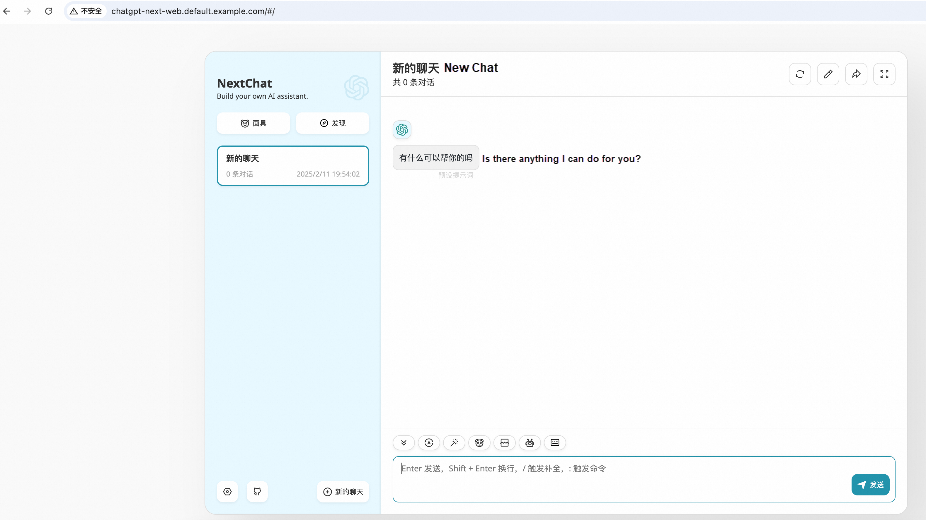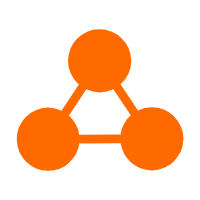By Peng Li (Yuanyi)
The traditional auto scaling strategy based on GPU utilization cannot accurately reflect the actual load of large model inference services. Even if the GPU utilization reaches 100%, it does not necessarily indicate that the system is running under high load. Knative provides the automatic scaling mechanism, KPA (Knative Pod Autoscaler), to adjust resource allocation based on the QPS or RPS, directly reflecting the performance of inference services. The DeepSeek-R1 model is used to describe how to deploy a DeepSeek-R1 inference service in Knative.
• Knative is deployed in the ACK cluster. For more information, see Deploy Knative.
• The ack-virtual-node component is deployed. This component is required when you use elastic container instances. For more information, see Deploy ack-virtual-node in the cluster.
Create a Knative Service, add the alibabacloud.com/eci=true label to the Service, and add the k8s.aliyun.com/eci-use-specs annotation to specify the type of elastic container instance to be used. Then, run the kubectl apply command to deploy the YAML file.
• Resource specification: Example: ecs.gn7i-c8g1.2xlarge.
• Inference model: DeepSeek-R1-Distill-Qwen-1.5B.
Sample template:
apiVersion: serving.knative.dev/v1
kind: Service
metadata:
labels:
release: deepseek
name: deepseek
namespace: default
spec:
template:
metadata:
annotations:
k8s.aliyun.com/eci-use-specs : "ecs.gn7i-c8g1.2xlarge"
autoscaling.knative.dev/min-scale: "1"
labels:
release: deepseek
alibabacloud.com/eci: "true"
spec:
containers:
- command:
- /bin/sh
- -c
args:
- vllm serve deepseek-ai/DeepSeek-R1-Distill-Qwen-1.5B --max_model_len 2048
image: registry.cn-hangzhou.aliyuncs.com/knative-sample/vllm-openai:v0.7.1
imagePullPolicy: IfNotPresent
name: vllm-container
env:
- name: HF_HUB_ENABLE_HF_TRANSFER
value: "0"
ports:
- containerPort: 8000
readinessProbe:
httpGet:
path: /health
port: 8000
initialDelaySeconds: 60
periodSeconds: 5
resources:
limits:
nvidia.com/gpu: "1"
requests:
nvidia.com/gpu: "1"
volumeMounts:
- mountPath: /root/.cache/huggingface
name: cache-volume
- name: shm
mountPath: /dev/shm
volumes:
- name: cache-volume
emptyDir: {}
- name: shm
emptyDir:
medium: Memory
sizeLimit: 2GiAfter the deployment, on the Services tab, record the gateway IP address and the default domain name of the Service.

Verify the DeepSeek service:
curl -H "Host: deepseek.default.example.com" -H "Content-Type: application/json" http://deepseek.knative.top/v1/chat/completions -d '{"model": "deepseek-ai/DeepSeek-R1-Distill-Qwen-1.5B", "messages": [{"role": "user", "content": "Introduction to DeepSeek-R1"}]}'Response:
{"id":"chatcmpl-07d99924-b998-4f39-9ec9-01dfb4ece8a0","object":"chat.com pletion","created":1739003758,"model":"deepseek-ai/DeepSeek-R1-Distill-Qwen-1.5B","choices":[{"index":0,"message":{"role":"assistant","reasoning_content":null,"content":"<think>\n\n</think>\n\n DeepSeek-R1 is a large language model developed by DeepSeek to support dialogue and language understanding tasks. Here is some key information about DeepSeek-R1: \n\n1. **Architecture and Technology**: \n - **Language Processing**: As a large language model, the main functions of DeepSeek-R1 include text generation, understanding, and dialogue. \n - **Self-learning Ability**: The model is trained with a large amount of text data to improve its natural language processing capabilities. \n\n2. **Application Scenarios**: \n - **Chatbots**: The model is used to assist humans in dialogues in the manufacturing, healthcare, and education fields. \n - **Content Generation**: The model is adept at generating high-quality content for news reports and marketing materials. \n\n3. **Technical Features**: \n - **Efficient Computing**: Compared with lightweight models, DeepSeek-R1 is more efficient and suitable for real-time responses. \n - **Modular Design**: The model is based on a modular architecture for easy extension and optimization. \n\n4. **User Evaluation**: \n - **Usage Scenarios**: The model meets the needs of enterprises in specific industries. \n - **Evaluation Criteria**: It is evaluated based on technical accuracy and application scenarios. \n\n5. **Features and Benefits**: \n - **Superior Performance**: It performs well in multiple natural language processing tasks. \n - **Practicality**: It can address language processing needs in real-world workplaces. \n\n6. **Future Development**: \n - **Technical Updates**: The model is continuously optimized, with attention to more application areas, such as autonomous driving and other ethical issues. \n\n In summary, DeepSeek-R1 is a powerful and industry-specific large language model designed to serve real-world scenarios with efficient artificial intelligence.","tool_calls":[]},"logprobs":null,"finish_reason":"stop","stop_reason":null}],"usage":{"prompt_tokens":8,"total_tokens":337,"completion_tokens":329,"prompt_tokens_details":null},"prompt_logprobs":null}Knative allows you to define a specific domain name for a Knative service.

You can use Alibaba Cloud DNS to resolve domain names to the gateway IP address.
ChatGPTNextWeb allows you to deploy private ChatGPT web applications with one click. It supports DeepSeek, Claude, GPT4, and Gemini Pro models. You can use Knative to quickly deploy and access ChatGPT web applications.
apiVersion: serving.knative.dev/v1
kind: Service
metadata:
name: chatgpt-next-web
spec:
template:
spec:
containers:
- name: chatgpt-next-web
image: registry.cn-hangzhou.aliyuncs.com/knative-sample/chatgpt-next-web:v2.15.8
ports:
- containerPort: 3000
readinessProbe:
tcpSocket:
port: 3000
initialDelaySeconds: 60
periodSeconds: 5
env:
- name: HOSTNAME
value: '0.0.0.0'
# Replace with your OpenAI API endpoint.On the Services tab, record the gateway IP address and the default domain name of the Service.

1. Add the following information to the hosts file to map the domain name of the Service to the IP address of the gateway for the chatgpt-next-web Service. Example:
8.211.157.198 chatgpt-next-web.default.example.com # Replace the gateway IP address and domain name with the actual values. 2. After you modify the hosts file, go to the Services tab, and click the default domain name of the chatgpt-next-web Service to access the Service. As shown in the figure:

3. Configure DeepSeek.
• Set the port endpoint:
http://deepseek.knative.top
• API Key: You can directly apply for an API key on the official DeepSeek platform.
https://platform.deepseek.com/api_keys
• Custom domain model: deepseek-ai/DeepSeek-R1-Distill-Qwen-1.5B.
4. Check results.
Solving GPU Shortages in IDC with Alibaba Cloud ACK Edge and Virtual Nodes for DeepSeek Deployment

222 posts | 33 followers
FollowAlibaba Cloud Native Community - February 20, 2025
Alibaba Container Service - May 27, 2025
Alibaba Container Service - May 19, 2025
Alibaba Cloud Data Intelligence - February 8, 2025
Alibaba Container Service - February 7, 2020
Alibaba Container Service - April 17, 2025

222 posts | 33 followers
Follow Container Service for Kubernetes
Container Service for Kubernetes
Alibaba Cloud Container Service for Kubernetes is a fully managed cloud container management service that supports native Kubernetes and integrates with other Alibaba Cloud products.
Learn More EasyDispatch for Field Service Management
EasyDispatch for Field Service Management
Apply the latest Reinforcement Learning AI technology to your Field Service Management (FSM) to obtain real-time AI-informed decision support.
Learn More Network Intelligence Service
Network Intelligence Service
Self-service network O&M service that features network status visualization and intelligent diagnostics capabilities
Learn More Conversational AI Service
Conversational AI Service
This solution provides you with Artificial Intelligence services and allows you to build AI-powered, human-like, conversational, multilingual chatbots over omnichannel to quickly respond to your customers 24/7.
Learn MoreMore Posts by Alibaba Container Service